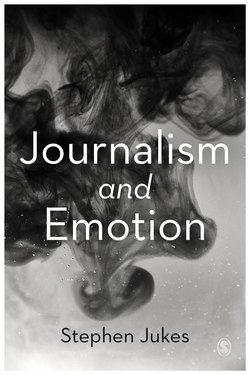Читать книгу Journalism and Emotion - Stephen Jukes - Страница 22
На сайте Литреса книга снята с продажи.
2 Journalism and the Rise of Emotion in a Post-truth Society
ОглавлениеLast night it was incredibly busy, there were vigils here, there were vigils at the Eiffel Tower, the Eiffel Tower was lit up in red, white and blue, which I think is a sign of hope [he turns away from the camera, unable to continue] … sorry, so sorry … I will leave it there, there is certainly hope here in Paris.
Graham Satchell, BBC
Overcome by emotion, the BBC’s Graham Satchell broke down live on air as he reported from Paris following the wave of ISIS-inspired terror attacks in November 2015. Satchell was clearly devastated, later saying he was mortified at his behaviour. The incident was reminiscent of that more than 50 years earlier when the US news anchor Walter Cronkite shed a tear on air at President Kennedy’s death. Both men viewed their display of open feelings as a professional lapse, demonstrating just how deeply entrenched the normative values of detachment and emotion free reporting are. Satchell, a seasoned BBC reporter, was doing a live feed on BBC breakfast television and received countless sympathetic comments from professional journalists and the public alike. One of the London news anchors at the other end of the line showed immediate understanding, comforting him on air: ‘Graham, I know it has been a hugely difficult, distressing time for everybody who has been involved in that story in Paris.’ And in the hours that followed, Satchell’s Twitter feed was full of supportive comments, one saying that he had shown a natural, raw human response to an act of barbarism.
The outpouring of sympathy for Satchell from his colleagues illustrated the extent to which the profession of journalism has come to acknowledge the impact of trauma on individual reporters, a topic discussed in detail in Chapter 6. But it was also testimony to how the public’s expectations have changed over the past 50 years. Today’s viewers want the emotion of the story, told through those caught up in it, but they also want – and expect – the emotions of the reporter. And while this is very much still contested, an increasing number of journalists recognise this as well. The veteran Channel 4 journalist Jon Snow acknowledged this change explicitly, saying in a Guardian newspaper opinion piece a few days later (2015):
Journalism makes no sense to the citizen without some emotional engagement. That doesn’t mean we have to sensationalise, or struggle to be emotional in our reporting. But we do have to tell it like it is. If we deny the impact an event has upon us, we deny not only ourselves, but those who depend on us for at least some of their information.
In today’s social media world, infused by populism and fake news, the open display of emotion by journalists may still be controversial but it is no longer taboo. It is no longer a surprise; it is viewed by some members of the public as more authentic than the old ‘stiff upper lip’ model of detached journalism and it reflects a trend by which news has partly become seen as a means of entertainment. No more than 15 years ago, the reaction to Satchell’s on-air breakdown might have been different. Rosenstiel and Kovach (2005) formulated rules for the journalistic display of emotion, arguing that ‘emotion ought to come at those moments when any other reaction would have seemed forced or out of place’. This was the Cronkite school of journalism; once the crisis had passed – for example, the day after the breaking news story – normal rules of detachment and objectivity were to be resumed. Today, that is no longer always the case.
This chapter explores the ways in which the taboo over journalistic emotion has been eroded and how the boundaries between traditional forms of journalism and content on social media platforms have become blurred. It charts the rise of emotion in the populist media landscape, relating this to a variety of factors ranging from the advent of the ‘therapy culture’, ‘turn to affect’ and growth of autobiographical journalism to technological change associated with the era of social media and disruption to the traditional business models of news production. The chapter argues that there are two main ways in which an affective media landscape has been generated: first, through the sheer volume of emotive user-generated content that journalists are now incorporating into mainstream news reporting, and second, through a series of practices that, whether they are openly acknowledged or not, are undermining the normative codes of objectivity in favour of a journalist’s identity, feelings and personal views. The chapter concludes by exploring the performative aspects of broadcast news and elements of ritual that have entered into the coverage of stories on terror and natural disaster as part of this emotionalisation of news culture.
